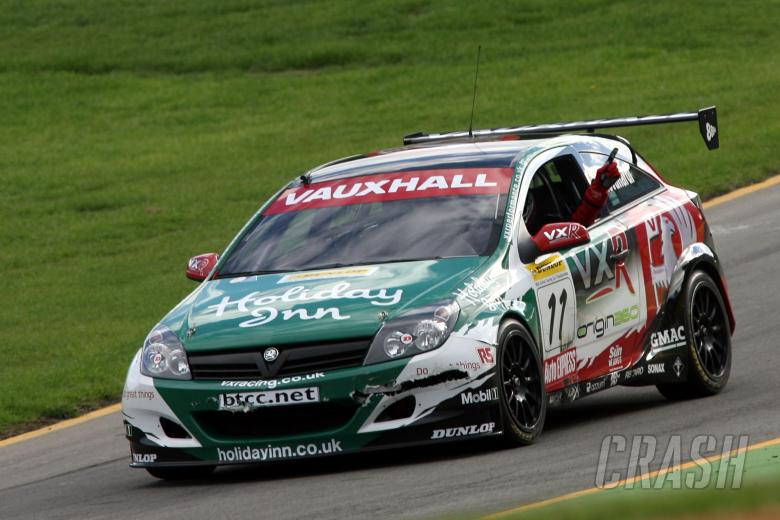VXR: Producing the goods.

In the latest column for VXR, special projects manager at Triple Eight, Raphael Caille talks about the new Astra VXR Sprint R to be used in the BARC Dunlop Sport Maxx Cup and the challenges of developing an engine for the BTCC.
In the latest column for VXR, special projects manager at Triple Eight, Raphael Caille talks about the new Astra VXR Sprint R to be used in the BARC Dunlop Sport Maxx Cup and the challenges of developing an engine for the BTCC.
The Astra VXR Sprint R is a car that we have developed specifically for the new BARC Dunlop Sport Maxx cup. It is based on a proper race shell, similar to the one we use in the BTCC, but the rest of the car is much lower in terms of specification than the BTCC car - it is much closer to a road car.
This is how the car will be made at Triple Eight and how we want to run it is that we will build cars and sell them to customers who will go out in the series and run them themselves, we aren't getting involved with actually running the cars. We have full support from Vauxhall for this and perhaps the most important thing is that Vauxhall want us to use the production cup as a stepping stone before the BTCC for young drivers. What we are going to do is offer a test drive in a BTCC car at the end of the production cup to the best performer using the Astra VXR Sprint R.
Looking at the two cars, the outside shape is probably the thing that is the most similar and the roll cage is also quite similar. However, the rest of it is different. I guess the best way of looking at how different they are is to consider than one is four times more expensive than the other, which shows how close to a road car the Sprint R actually is.
Putting together a production car like the Sprint R requires a completely different approach to a proper race car. When we design our BTCC car, we are obliged to take some road car parts, like the shell for example or the engine block, but from that point onwards we only thinking about the lightest and stiffest parts so we can get the most performance out of the car. When we do a production car, we take a road car - which is basically a donor car - and transfer the components onto a race shell. Then we add some race suspension. But as the title says, the whole idea is to keep it as close to a road car as possible.
We have had a lot of interest in the car but we haven't had any firm orders, which is because everyone was waiting for Dunlop to formally announce the new series. Now that has been done, we are expecting the orders to start coming in before Christmas.
With the BTCC, I am involved with the engine side of the project at Triple Eight. The project is one where we sub-contract about 70 per cent to Sodemo who are based in Magny-Cours in France. The rest of the project is done at Triple Eight and it is probably quite rare to have an engine programme that is so integrated into the team in touring cars. Both drawing offices at Triple Eight and at Sodemo have a permanent link and there are parts made North of the Channel and South of the Channel.
Everything is assembled at Sodemo and then it gets put into the race cars at Triple Eight. I don't believe it is a classic set-up, but it is one that we have come to with the experience and relationship that we have build with our partner and it seems to pay off as I believe we have the strongest engine on the grid.
I guess the main thing in our relationship with Sodemo is transparency. Most of the issues between a race team and an engine builder normally come through a lack of communication. There is a geographical issue and we are based in a different place and a different country to Sodemo, but the key to a successful relationship is to communicate. That is the part that you need to get right.
Of course we switch to a Super 2000 car for next season and we started developing our S2000 engine nearly six months ago. It is a very long process and while the spirit of the technical regulations is very similar to the BTCC regulations, every number - whether they are weight limits or compression limits - is different. This means we can gain from the experience we have with the BTCC engine, but in terms of doing the development work we are starting from scratch.
The amount of time you can develop an engine before going racing is key and for this we have been lucky because we have such a strong relationship with Vauxhall and they could give us the green light for next year at an early stage. It means we have a development phase that is almost a year before we hit the track.
We don't have the three years of experience that SEAT have with an S2000 car but we are working hard and thinking fast and we will catch them up.



